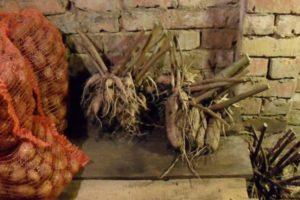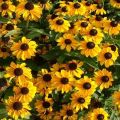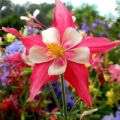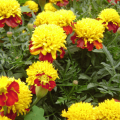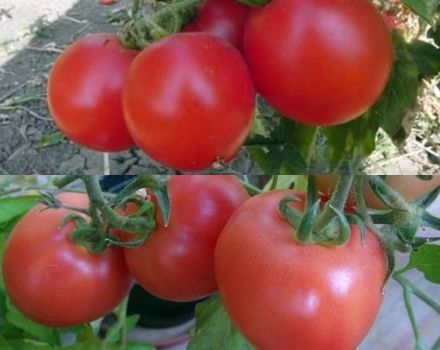100 types and varieties of garden bells with a description, planting and care
The meadow bell or garden bell is a delicate but very hardy herb that adapts perfectly to any soil. There are many varieties of this culture, but each of them has one distinctive, common feature for all plants from this family - flowers like a glass or a bell. It blooms profusely, regardless of weather conditions, from June to September.
Content
- 1 Description and features
- 2 Growing seedlings from seeds
- 3 Landing in open ground
- 4 Care
- 5 Reproduction
- 6 Kinds
- 7 Popular varieties
- 7.1 White Star
- 7.2 Alba
- 7.3 Riversley
- 7.4 Chenton Joy
- 7.5 Blaumeise
- 7.6 Carpatenkrone
- 7.7 Clip
- 7.8 Major
- 7.9 H. Paine
- 7.10 Loder
- 7.11 Miss Wilmott
- 7.12 Beauty Trust
- 7.13 Wedding Belz
- 7.14 Rubra
- 7.15 Albic Nana
- 7.16 Pink Octupus
- 7.17 Kent Belle
- 7.18 Brantwood
- 7.19 Makranta
- 7.20 Bernice
- 7.21 Thetam Beauty
- 7.22 Exmaus
- 7.23 Snow drift
- 7.24 New Giant Highbrides
- 7.25 Cerulea
- 7.26 Pritchard Verayeti
- 7.27 Celestine
- 7.28 Isabel
- 7.29 Alba Nana
Description and features
The garden bell is a herbaceous crop from the Bellflower family. Grows in temperate latitudes with a continental climate. There are more than 400 species of this culture. It is represented by an annual, biennial or perennial. Often used to decorate flower beds.
The stem can be erect, spreading, or branched. The plant can be short, medium-sized or tall (up to 1.55 meters in length). The root system is pivotal or rhizome. The leaves are arranged in the following order.
They are oblong, lanceolate or semicircular in shape, with a serrated, zigzag or even edge. The size of the leaf blades and the length of the petioles gradually decrease towards the apex of the shoot. There are basal leaves at the base of the stem. The flower is very similar to a glass or a bell. Inflorescences are racemose or paniculate. The flower is bisexual, regular, on a peduncle. Can be blue, white, blue.
Blooms all summer, pollinated by bees. After pollination, the fruit is formed - a box with tiny seeds inside. Propagated by seed or vegetatively.
The coloring pigment, due to which the bell has a delicate blue color, is susceptible to acids. If you plant a flower on acidic soil, it will blush instantly. This feature of the plant can be used to determine the acidity of the soil. You can sprinkle a freshly cut bell with earth and watch the reaction.If it changes its color to scarlet, it means that the soil is very sour.
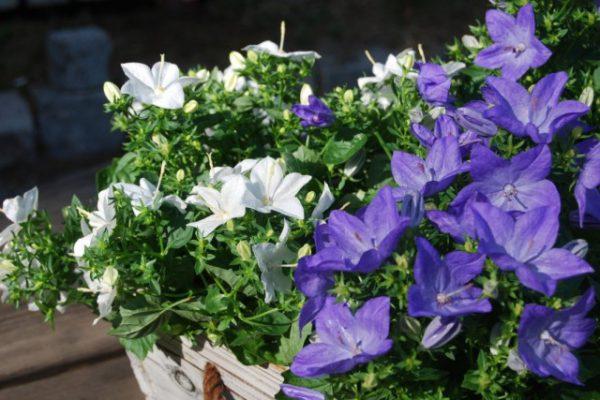
Growing seedlings from seeds
In the spring, bells can be sown on seedlings. The seed is preliminarily kept in the refrigerator, on a shelf with vegetables, for 2 months.
Sowing dates
Seeds are sown in pots with a substrate in March. Closer to summer, they are transferred to a flower bed.
Ground requirements
For planting, they take not too heavy soil, consisting of garden (sod) soil, sand, peat, compost (humus). All ingredients are taken in equal parts.
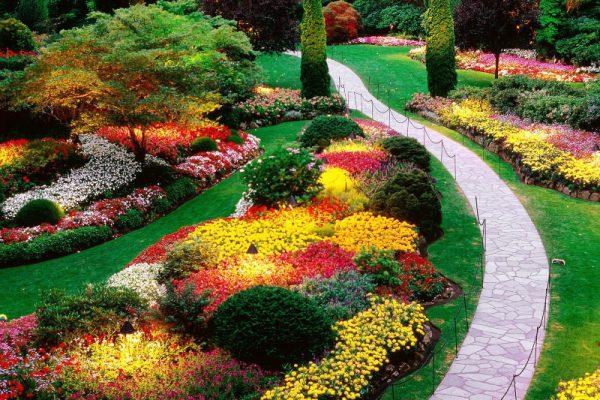
Landing scheme
The seeds are poured onto well-moistened soil at a distance of 1 centimeter from each other, sprinkled with sand. Then sprinkle with water and cover with transparent glass on top.
Temperature and light conditions
The boxes with seeds are kept in a room with an air temperature of 19-23 degrees Celsius. After 2-3 weeks, the seeds germinate. As soon as shoots appear, the boxes are transferred to the windowsill, closer to the sunlight. It is advisable to highlight the seedlings in the evening. Daylight hours should be 10 hours.
Watering
The seedlings need to be constantly looked after, from time to time to irrigate the land with water, to ensure that the soil does not dry out. You can loosen the soil by removing the hard soil crust.
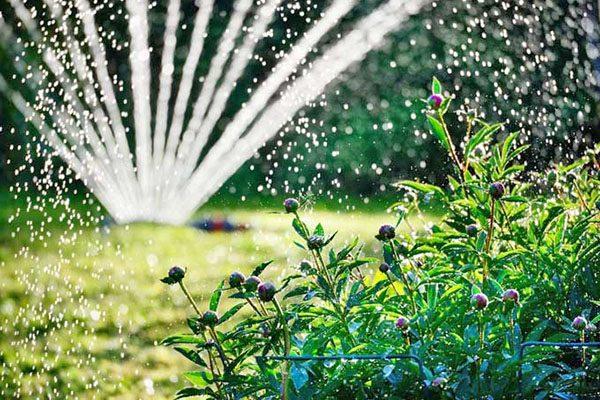
Dive
Bells dive when the seedlings are three weeks old. The plant should have 2-3 true leaves by this period. Seedlings are planted in separate pots or plastic cups. 2 weeks after the pick, the plants are fed with a complex fertilizer of low concentration.
Transfer
At the end of spring, when the soil warms up to 10 degrees Celsius, and the air temperature is 15 degrees, the seedlings of bells are transplanted to a flower bed. Before planting, the land is dug up and fertilized. For seedlings, shallow holes are prepared and by transferring, together with an earthen lump, the plant is transferred to a flower bed.
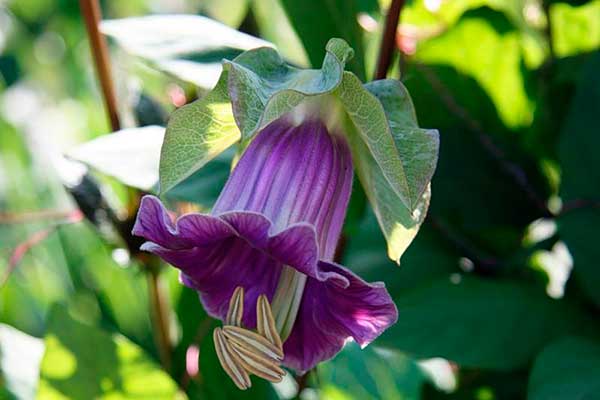
Landing in open ground
Bells are a thermophilic and light-loving culture. It is advisable to plant grown seedlings in the garden in late spring.
Timing
In the middle (end) of May, when the air warms up to 14-15 degrees Celsius, the seeds can be sown immediately on the garden bed. At the same time, you can plant pre-prepared seedlings. They practice podzimny planting, in this case, seeds are sown on the garden bed in October.
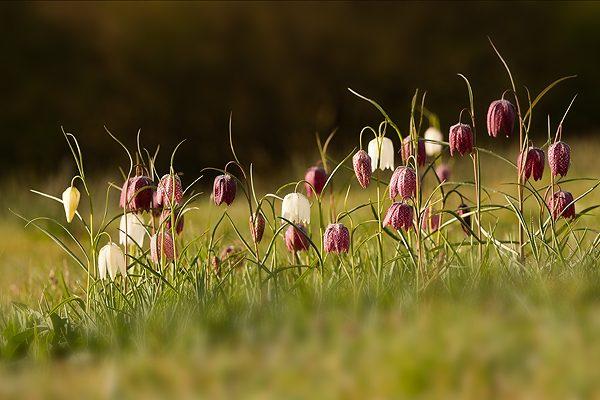
Seat selection
They love to grow in open, sunny garden areas. They do not tolerate swampy, heavy, acidic soils.
How to choose and prepare the soil
They grow on loamy or sandy loam, non-acidic soils. They prefer not too heavy and loose soil of neutral acidity. Highly clayey soil is diluted with peat, sand and compost. Sod and minerals are additionally introduced into the poor soil.
Disembarkation rules
It is advisable to prepare the land for planting in advance. The site needs to be thoroughly dug up, weeds removed, loosened, compost and superphosphate added. The acidity of the soil can be reduced by adding a little wood ash. Bells are planted away from tall plants. The distance to the neighboring flower should be 15-40 centimeters. After planting, the soil is lightly compacted and watered abundantly.
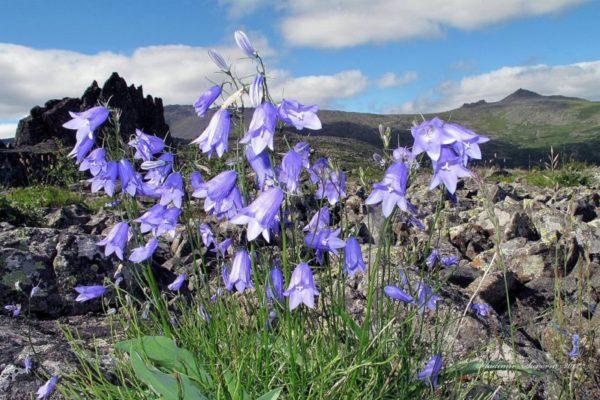
Care
Bell is an unpretentious culture that requires a minimum of attention. Caring for it is no different from caring for other garden crops.
Watering
Watering is necessary occasionally, only in drought and hot weather. Prefers moderate watering. They take water that is settled, not hard, better - rainwater.
Loosening and weeding
The land near the bells must be constantly loosened, weeds removed. Be sure to break up the hard soil crust.
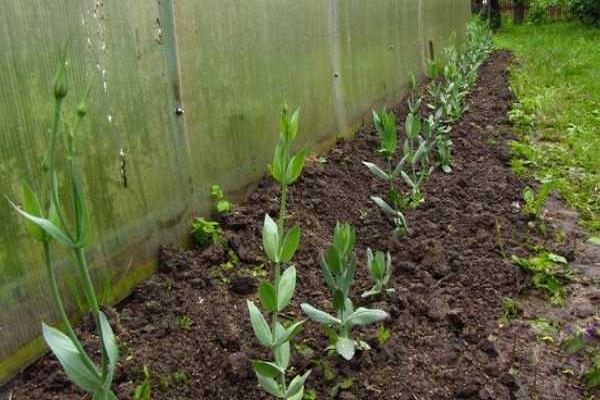
Garter to support
Tall bells must be tied to a support. Pegs or a net are used as support.
Top dressing
In the spring, during the growth period, the flower culture can be fed with nitrogen supplements. A little wood ash, rotted manure can be added to the soil.Before flowering, the soil is fertilized with potash and phosphorus substances at the rate of 35 grams per 1 square meter of the plot.
Pruning
Bells will bloom for a long time if the fading peduncles are constantly removed. In autumn, the stems of the plant must be completely cut off.
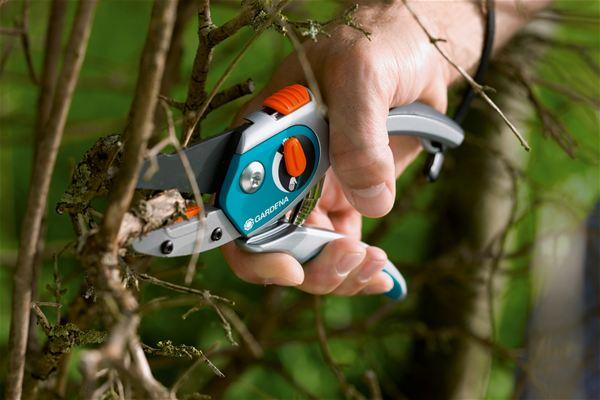
Pests and diseases
Bells rarely get sick. True, in the case of long-term cultivation in the same place, they can get sick with a fungal infection (fusarium, sclerotinia, botrytis). As a preventive measure, plants are sprayed in the spring with a fungicide solution (Fundazole). Bells are often attacked by insects, such as slobbering pennies. Spraying with a garlic solution or insecticide is saved from them.
The tincture of bitter pepper, sand mulch or sawdust protects against slugs.
Stealing
Plant stems need to be pinned, removing excess lateral or apical shoots. It is advisable to remove dried leaves and flowers from the bush.
Mulching
The land near the plants can be mulched with sawdust or small pebbles with sand. Mulch helps to retain moisture in the soil, prevents weeds from breaking through.
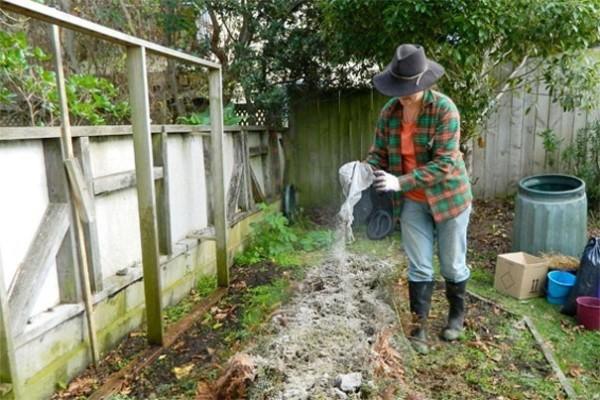
Topping
The top of the stem should be pinched at the very beginning of summer. This procedure stimulates the growth of lateral shoots, and the stem will not stretch too much.
Reproduction
The culture propagates by seeds or vegetatively, that is, by cuttings, by dividing the rhizome. Each species has its own way of reproduction.
Annuals
Propagated exclusively by seed method. Seeds can be sown in October in a flower bed. During the winter they will undergo natural stratification, and in the spring they will all rise together. The seeds are usually sown in pots (cups) in March, and in May they are sown directly on the flower bed. The seed is preliminarily kept in a refrigerator, on a shelf with vegetables, for 2 months.
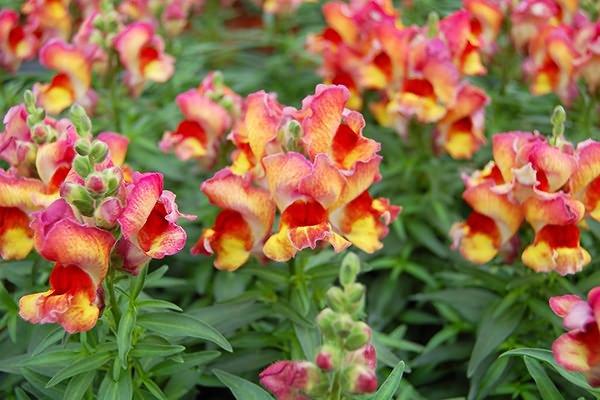
Biennials
They can reproduce by seeds, and in the spring by green cuttings. Young stems are taken for cuttings. They are cut from stem or basal shoots, put in water. The roots of the cuttings grow back after 3-4 weeks.
Perennials
Propagated by seeds and vegetatively. The seed method is suitable for plants with a taproot system. With seed propagation, varietal characteristics are not always preserved.
Bells with branched roots can multiply by dividing the rhizome. With vegetative propagation, you can get a plant with all hereditary characteristics, similar to the mother culture. This method is practiced for double species and southern varieties that do not have time to give seeds in a continental climate.
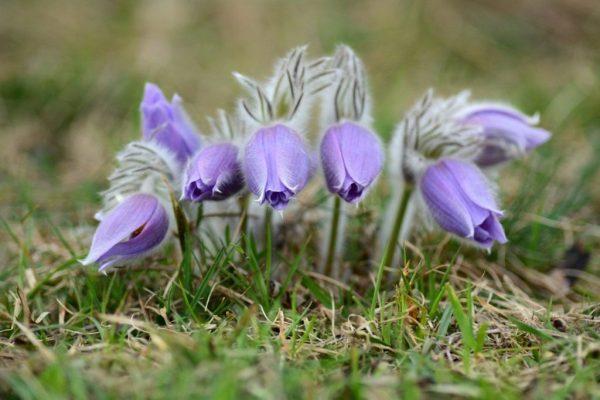
After flowering
Peduncles are removed after flowering. The plant can remain in the garden bed until October. Then all ground stems are cut off.
Collection and storage of seeds
When the seed pods turn brownish, they should be cut off before they open. The collected boxes are dried, after which small black seeds are removed from them. The seeds are stored until next spring in paper envelopes. True, the seeds can be sown in the ground immediately in the fall, before frost.

Preparing for winter
At the end of September, the shoots of all bells are cut at the root. Biennials and perennials are additionally insulated with a thick layer of dry foliage or peat mixed with humus. The thickness of the mulch should be 20 centimeters. In winter, snow must be constantly poured onto the place where the wintering roots are located.
Kinds
Bells are divided into all kinds. They differ among themselves in the height of the stem, the shape of the leaves and the peculiarity of the structure of the inflorescences.
Annuals
Annual bells come from southern latitudes. In regions with short summers and cold winters, they are rarely grown.
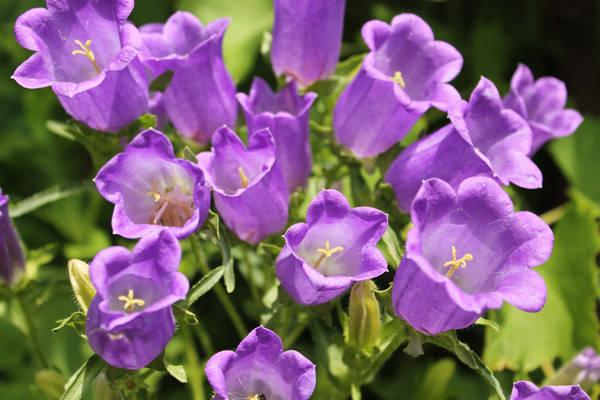
Dichotomous
An annual with numerous pale purple flowers native to the Western Caucasus. Reaches a height of 14-20 centimeters.The leaves are wide, ovoid with a sharp tip.
Kashmiri
A tiny annual plant that grows only 8-9 centimeters in height. Originally from the Pamirs and the Himalayas. Flowers - numerous, not very large, purple in color. Flowering is long lasting.
Long bar
Caucasian annual. The stem is highly branched, reaching a length of 53 centimeters. This variety has paniculate inflorescences consisting of 55-60 swollen bells of purple color.
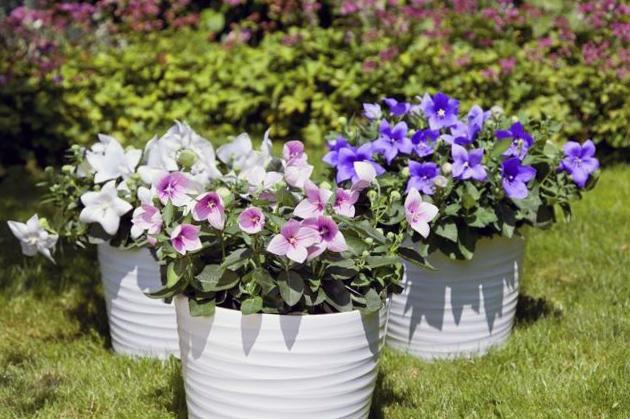
Mirror of Venus
It grows in height to 16-33 centimeters. Blue flowers with a light center are collected in paniculate inflorescences. There are varieties with snow-white flowers.
Ordinary
An annual with drooping pale blue flowers. Blooms from June to August.
Biennial
Plants with a two-year growing cycle native to South-Western Europe and Asia Minor. Used to decorate flower beds. In the first year, the seeds germinate and form a lush rosette of leaves, and in the second, they bloom and bear fruit.
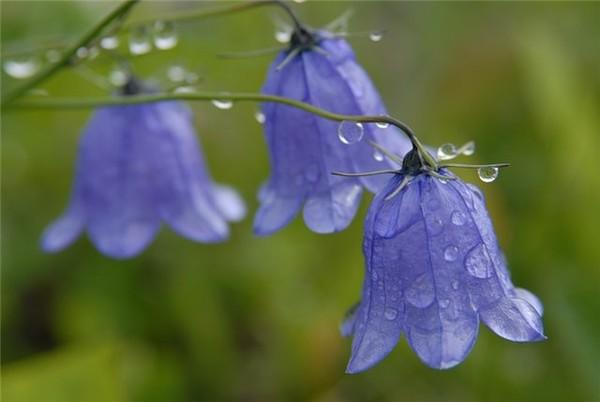
Bearded
This species is native to the Mediterranean. It reaches a height of 10-33 centimeters. Flowers are goblet-bell-shaped, drooping, pale blue.
Hoffman
It has a highly branched stem, 33-50 centimeters high. A large number of snow-white or creamy drooping flowers open in June and July.
Tirsoid
A culture with a spike-shaped inflorescence, consisting of pale yellow funnel-shaped flowers. The flowering period is July-August.
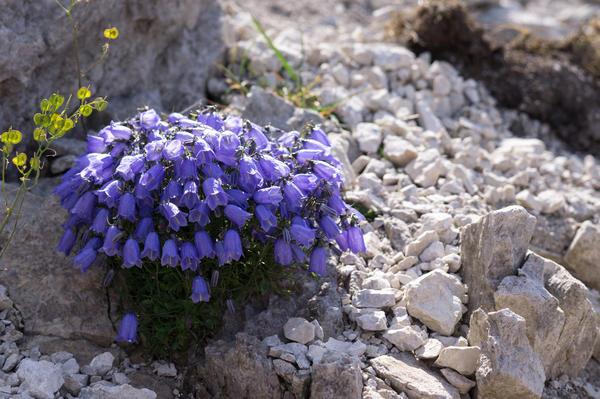
Large-ear
Originally from the Balkans. Reaches a height of 0.7-1.2 meters. Delicate purple flowers are collected in whorls of 6-7 pieces each.
Middle
A tenacious biennial with crystal, airy flowers of snow-white, deep blue or pinkish color, collected in pyramidal inflorescences. The stem sometimes extends up to 0.95 meters in height. There are varieties with double flowers and heavily cut edges.
Haired
European variety of bells. The stem and leaves of this plant are densely pubescent. Height - 77-107 centimeters. Flowers - sessile, small, sky-blue, collected in capitate and whorled inflorescences.

Siberian
Two-year culture, 14-50 centimeters high. All parts are covered with hard hairs. The flowers form a panicle, they are blue or purple.
Spreading
Biennial with erect stem, 55-75 centimeters long. It has light purple flowers, collected in racemose, loose inflorescences.
Lyre-shaped
Biennial with a straight stem, 50 centimeters high. Delicate lilac tubular flowers up to 2.1 centimeters long are collected in multi-flowered racemose inflorescences.
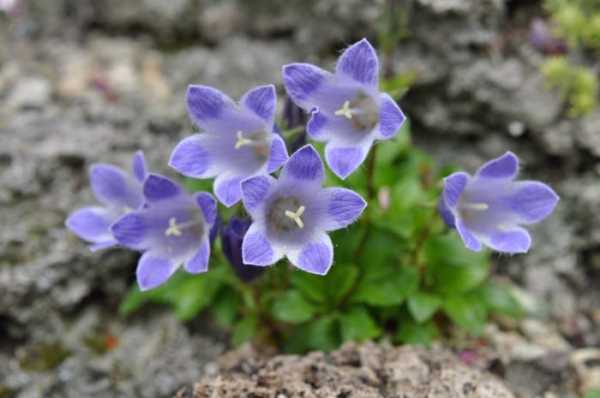
Spatulate
The culture comes from the highlands. It has thin stems 14-25 centimeters high. Flowers - dissected, funnel-shaped, pale purple, single.
Orphanidea
Grows on Greek rocks. Has silvery pubescent, elliptical leaves. Flowers - deep purple, collected in few-flowered paniculate inflorescences.
Mesian
Biennial with straight, pubescent stems, 55-70 centimeters high. The inflorescence is an apical head and axillary flower bundles with 16-20 bells of pinkish-lilac color.
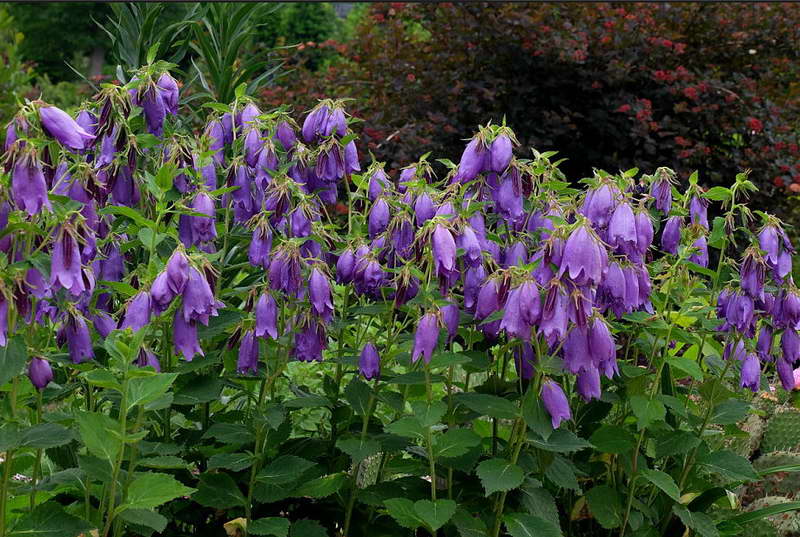
Divergent
Grows in the Crimea. The stem is low (up to 33 centimeters), strongly branched, has a spherical shape. Flowers - delicate lilac, collected in a racemose panicle.
Pyramidal
Tall, Mediterranean biennial, 1.45 meters long. Large spike-shaped racemes consist of numerous snow-white or lilac flowers.
Formaneka
A low, creeping plant with a height of 45 centimeters. It has numerous, wide, goblet snow-white flowers at the ends of the flower brushes.
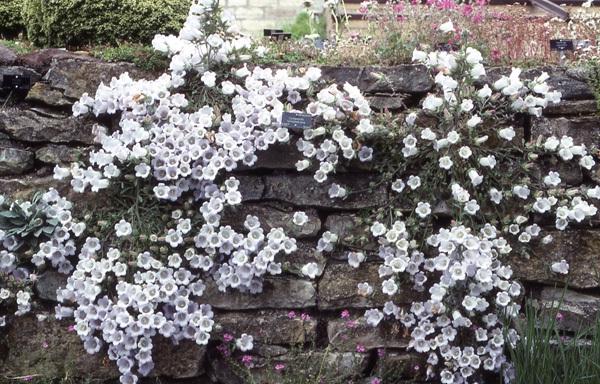
Sartori
The biennial is native to the mountainous regions of Greece. Stems - creeping, strongly pubescent, 10-20 centimeters long. The flowers are white or pink, numerous, small, located in the axils of the stem leaves.
Alpine
Low biennial (up to 16 centimeters) with an erect stem.Flowers - blue-violet, collected in several pieces in a loose inflorescence.
Perennials
Perennial bells are short, medium in height, and tall. They differ in the shape and color of the flowers.
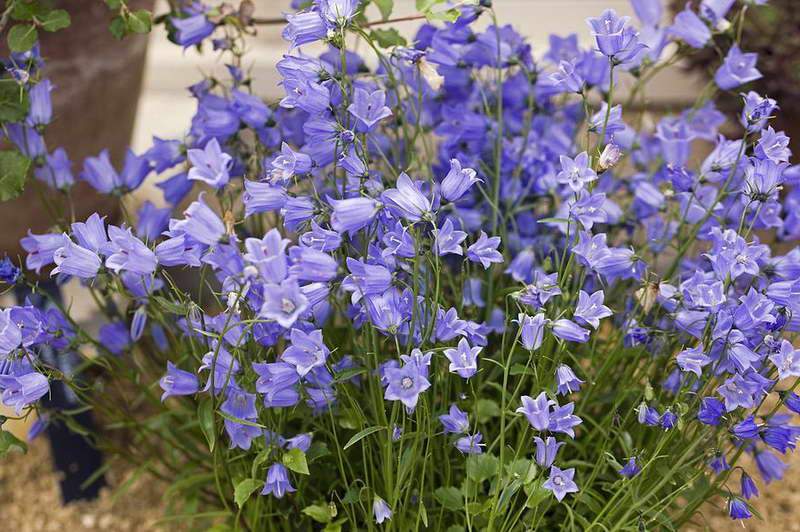
Undersized
Bells, which are less than 30 centimeters in height, are considered to be undersized. These flowers can be used to decorate a border, flower bed or balcony. Low-growing varieties are ideal for planting in a pot or small container.
Carpathian
A short perennial (up to 30 centimeters) with tiny single flowers of snow-white, sky-blue or purple, located at the very top of highly branched shoots.
The leaves are ovate, with pointed tips, wider at the bottom and narrower at the top.
Gargan
A profusely blooming, low-height culture (up to 16 centimeters) with fragile, creeping stems and rising tops, topped with gray-blue (blue) star-shaped flowers.
Spiral-leaved
A short perennial (up to 16 centimeters) with creeping stems. Flowers - drooping, collected in small inflorescences. The color of the petals is snow-white, deep blue, sky blue. Leaves - small and elongated at the stem, semicircular and tridentate at the edges - at the bottom at the base.
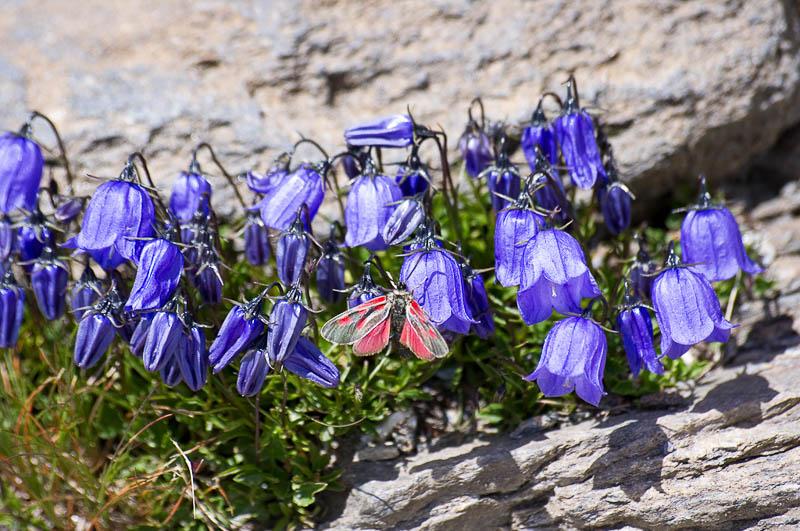
Shamiso
A tiny perennial native to the Far East. It has single violet-blue flowers 4 centimeters long and 2.9 centimeters in diameter. The corolla is shaggy at the edges. There are snow-white varieties.
Hairy
A tiny perennial (up to 16 centimeters) with erect thin stems. Has apical single flowers of a bluish color (up to 3.45 centimeters in length).
Saxifrage
Perennial 42 centimeters high with dark purple bell flowers. Leaves - slightly pubescent, jagged at the edges. Grows in rocky terrain.
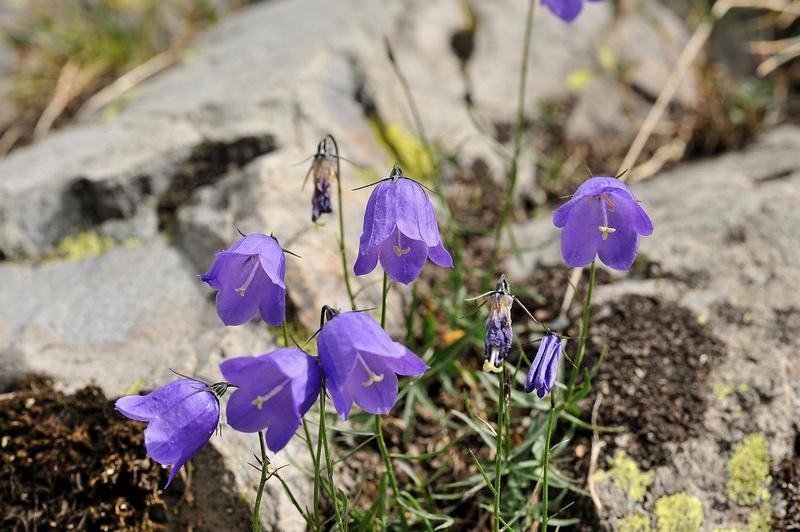
Daisy-leaved
A low-growing culture (up to 33 centimeters) growing on rocks. It has large blue flowers on the tops of numerous thin stems.
Osh
Found on the rocks of the Caucasus. Forms small compact bushes covered with large, dark violet flowers, flowers.
Povoynichkovy
Perennial native to the Adriatic mountains. Forms a central rosette with diverging thin and low stems. Flowers are large, bluish in color, collected in one-sided panicles.

Radde
Caucasian perennial with slender branchy stems. In the axils of the upper leaves there are medium-sized delicate lilac flowers.
Ciliated
A low-growing plant with a stem, 7-16 centimeters high. There is only one flower on the stem. The petals are purple in color, more saturated at the corolla limbs. As it blooms, the color changes, the flower turns bluish-blue at the end.
Darkish
A hybrid derived from the dark and alpine bellflower. The flowers are large, dark blue, and have a wide corolla.
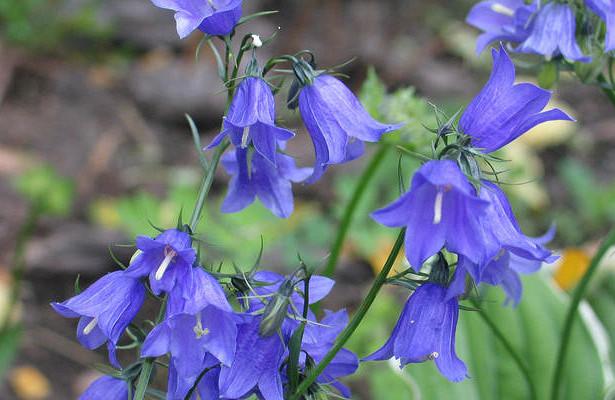
Uemury
A perennial native to Sakhalin. The stem is straight, simple and slightly branched up to 16 centimeters in length. The flowers are dark blue, with a split corolla.
Birch-leaved
Turkish perennial. Leaves are smooth, glossy, similar to birch. Stems are thin, erect. The flower has a narrow corolla of a snow-white or pinkish hue.
Turfy
Originally from the Alps and highlands. It has a thin creeping stem 12 centimeters long. The flowers are solitary, snow-white or pale blue. It blooms for almost 90 days.
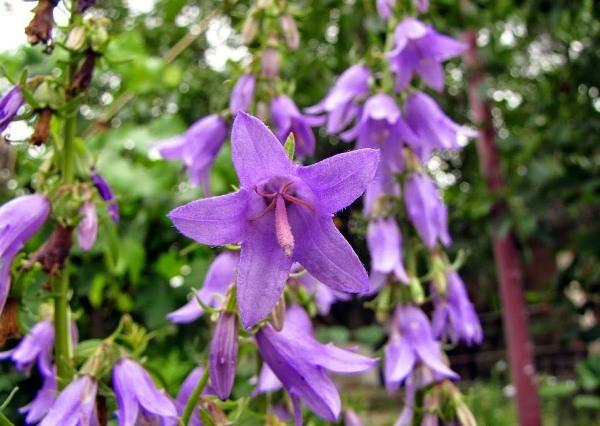
Kemularia
Caucasian perennial growing on limestone rocks. It has straight, slightly pubescent, branched stems up to 22 centimeters long. Bluish flowers of medium size are collected in paniculate inflorescences.
Single-flowered
Perennial with a single and straight stem, up to 22 centimeters high. Flowers - drooping, funnel-shaped, bluish-blue.
Ortana
Perennial native to the Western Caucasus. Stems - up to 22 centimeters long, thin, sometimes recumbent, branched. The flowers are numerous, pale purple in color.
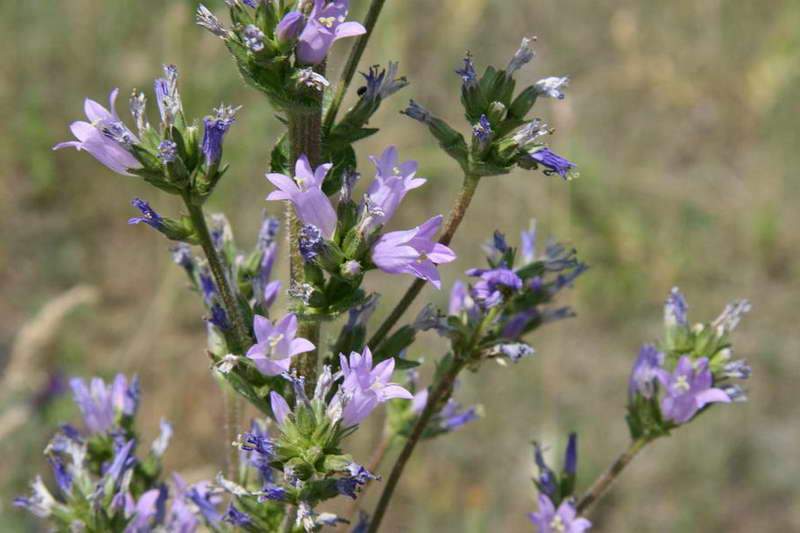
Borderline
Low rocky perennial. Large goblet flowers are formed on thin drooping stems. Scarlet buds, opening up, become pale pink.
Rainer
Perennial native to the south of the Alps. The stems are straight and short, with one or two flowers of pale blue or snow-white color.
Dark
Perennial native to the Carpathian Mountains. Forms dense green carpet thickets, covered with large, simple, dark purple flowers.
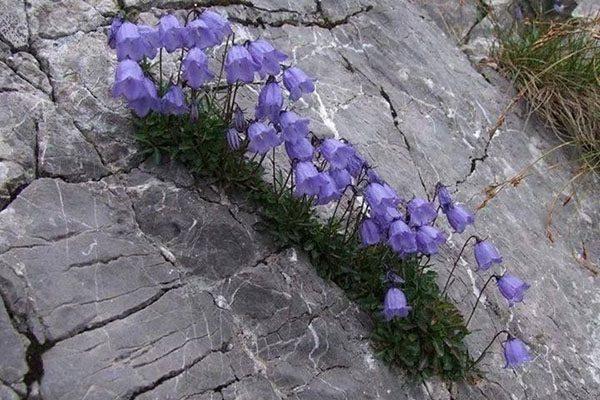
Three-toothed
Perennial with a lush rosette of lanceolate basal leaves. Flowers - single, dark purple, 3-4 centimeters in diameter.
Spoon-leaved
A small plant (up to 16 centimeters) with tiny light or purple drooping flowers, collected in loose, rare inflorescences. Stem - creeping, forms a dense sod.
Medium height
Bells, ranging in height from 35 to 60 (80), are considered medium-sized. Low plants are often used to decorate city flower beds and garden plots.
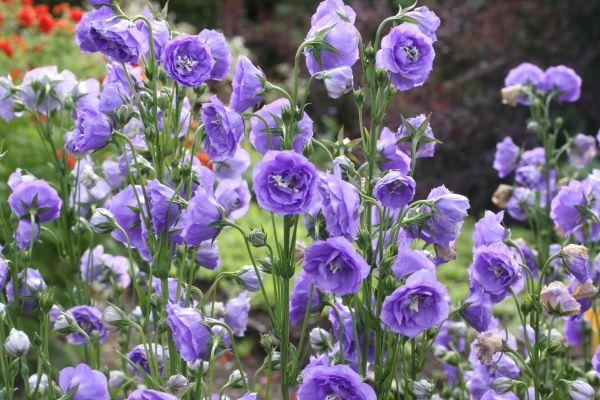
Takeshima
Originally from Korea and Iran. Reaches a length of 64 centimeters. It has numerous creeping, creeping and ascending stems. The flowers are simple and double, the color of the petals is snow-white, pale blue, pinkish. Flowers - drooping, leaves - heart-shaped, petiolar, with a wavy edge.
Komarova
Branching stems rise up to 46 centimeters in height. The flowers are large, numerous, bright purple, up to 3 centimeters long, have sharp turned petals.
Point
Perennial (up to 55 centimeters in length) with drooping light lilac or off-white flowers with dots on the petals. The leaves are oblong, lanceolate, with a sharp tip.
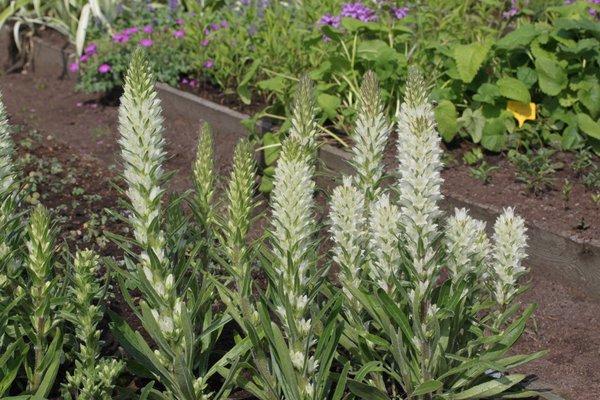
Sarastro
A kind of dotted bell with bright purple flowers up to 6.9 centimeters long. Reaches 63 centimeters in height, the bush can have a diameter of 0.45 meters.
Polymorphic
Perennial with thin stems and delicate bluish or snow-white bell flowers. Grows in mountainous areas.
Moravian
A graceful culture with long, thin stems and upward-looking pale blue bell flowers.
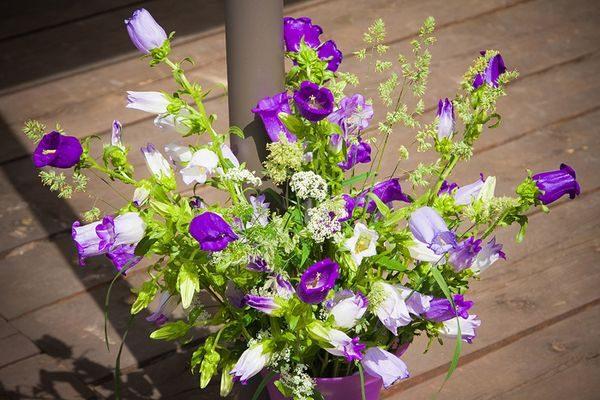
Spanish
Perennial forms a lush rosette, consisting of thin stems and small leaves. At the end of the shoots, drooping, pale blue large flowers are formed.
Karnika
Perennial native to the Alps. It has a thin stem and raised large, sapphire-colored flowers.
Round-leaved
Perennial up to 65 centimeters high. Basal leaves are round, and stem leaves are lanceolate. At the end of the stem, there are paniculate inflorescences with small blue flowers.
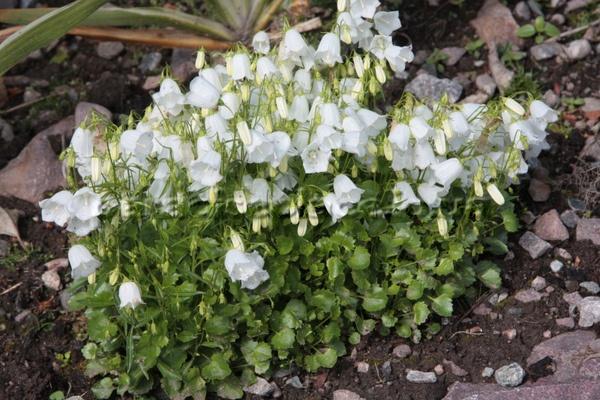
Kholmovoy
Perennial native to the meadows of the Caucasus. It has thin, straight stems. Flowers are bluish, up to 2 centimeters in diameter, collected in one-sided racemose inflorescences.
Sarmatian
Belongs to the Caucasian variety. It has a stem up to 43 centimeters long. Flowers - numerous, bluish, with a delicate honey aroma.
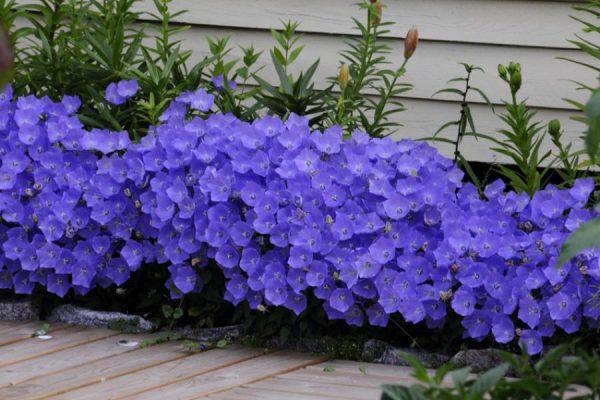
Grosseka
Perennial with an erect stem, 55-75 centimeters high. The plant is covered with tough hairs. Up to four blue-purple flowers grow at the ends of the stems.
Tatar
Alpine perennial. Small-flowered plant with numerous thin stems and delicate sapphire flowers at the tops.
Rhomboidal
Perennial with straight, succulent stems and narrow paniculate inflorescences. The flowers are turned up, lush, snow-white.
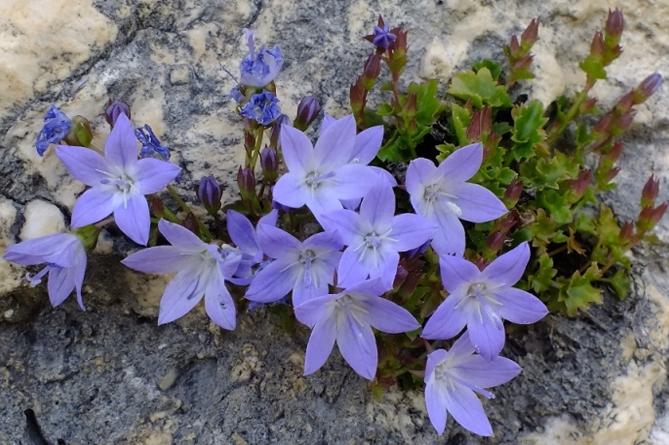
Flax-leaved
Perennial with long and thin stems. Leaves are oblong, thin, sharp. Delicate blue flowers are collected in oblong inflorescences.
Great
Perennial culture with thin stems topped with small sapphire-colored flowers.
Margesetti
Perennial with an erect, branched stem and large, violet-colored flowers.
Perforated
Perennial growing on the rocks of the Mediterranean.Forms a low, lush bush, strewn with star-shaped, pale blue bells.
Garlicleaf
Medium in height, densely pubescent perennial (up to 75 centimeters in length). Flowers are large, drooping, collected in one-sided racemose inflorescences. The color of the petals is snow-white or pale lilac.
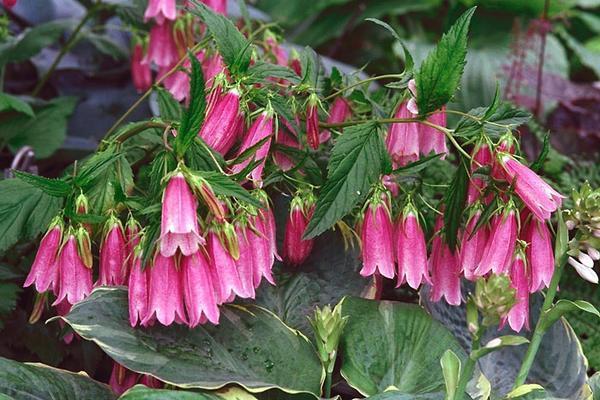
Pale-eyed
Perennial native to the Caucasus. It has large flowers of a pale ocher hue, collected in racemose inflorescences.
Tall
Bells with a height of 0.6 (0.8) to 1.55 meters are tall. They are planted in flower beds together with calendula, yaskolka, asters, evening primrose. Suitable for creating mono compositions and in group plantings.
Used in rock garden, rockery, mixborder.
Broadleaf
The erect stem reaches a height of 1.2 meters. Perennial with large brushes of snow-white, sky, lilac color. Flowers - funnel-shaped, up to 6 centimeters in length, with bent petals, collected in a narrow spike-shaped raceme.
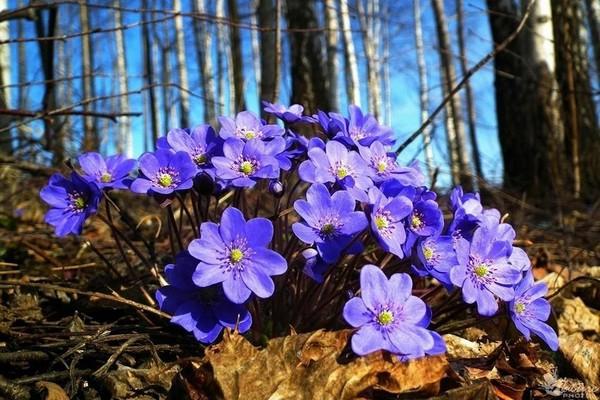
Peach
Graceful plant with an erect stem, 0.45-0.95 meters high. The leaves are smooth, jagged at the edges, similar to peach leaves. The flowers are large, wide, up to 5 centimeters long, gathered in a panicle. They can be snow-white, blue, lilac, in shape - crown or double.
Lactobacillus
The stem is high (from 0.65 to 1.5 meters), strongly branching. It has a taproot and grows well on heavy, clayey soils. A plant with a broad-pyramidal inflorescence, consisting of numerous milky white, lilac or purple flowers.
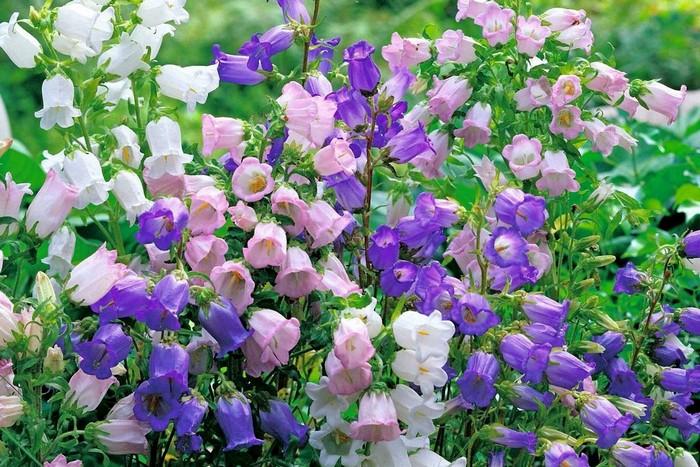
Bored
Perennial with straight, slightly branched stems, 65 centimeters high. The bell has multi-tiered, lush, prefabricated numerous inflorescences of snow-white, lilac, purple. Basal leaves are oblong, petiolate, stem leaves are sessile, lanceolate.
Noble large-flowered
Tall perennial with a straight or branching stem. Large flowers of dark blue color are collected in a long spike-shaped raceme.
Rapunzel
Perennial up to 0.95 meters high. The stem is simple, erect. Inflorescence is racemose, long, one-sided.
The color of the petals is pale blue, blue-violet, pale white.
Bolognese
Perennial 75-105 centimeters high. Small delicate lilac flowers are collected in a long spike-shaped raceme.
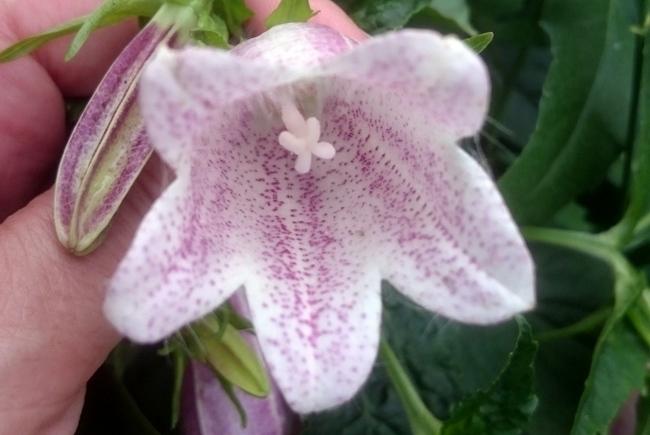
Nettle
Bellflower with numerous, erect, branched stems covered with hard hairs. The leaves are also pubescent, similar to the leaves of nettles. The flowers are snow-white, bluish, violet in color. They are located in the axils of the leaves and are collected in a racemose inflorescence, up to 46 centimeters long.
Equifolia
Forms a lush bush with numerous snow-white or sapphire-colored flowers at the ends of the shoots. Leaves are rounded, sometimes pubescent. The flowers are large, up to 3.9 centimeters in diameter.
Popular varieties
On the basis of numerous types of bells, interesting varieties have been obtained that are grown as garden and indoor plants.
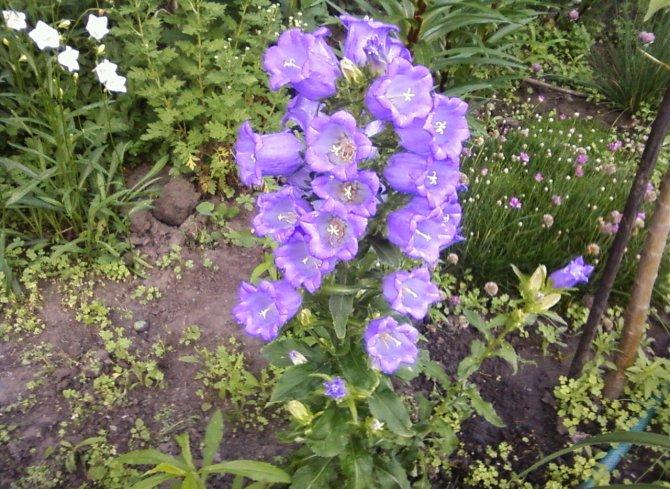
White Star
A variety developed on the basis of the Carpathian bell. Flowers are solitary, snow-white in color.
Alba
This variety originated from the Carpathian bell. Flowers - funnel-bell-shaped, snow-white. The snow-white variety, bred on the basis of a spiral-leaved bell (creeping stems with numerous flowers on top), is named in the same way.
Riversley
Bred on the basis of the Carpathian bell, a variety with blue flowers.
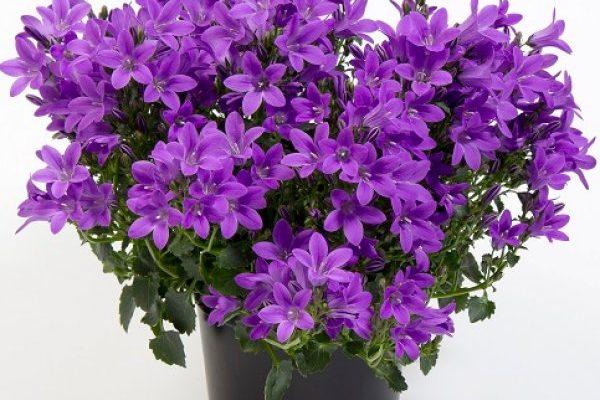
Chenton Joy
A popular variety of the Carpathian bell with a sapphire hue, single flowers. A huge number of bright flowers grow on a strongly branched stem over the green foliage.
Blaumeise
Variety with numerous blue bell-flowers. Derived from the Carpathian variety.
Carpatenkrone
Carpathian variety of bluebells with a huge amount of purple flowers.
Clip
A tiny plant, up to 22 centimeters high.The variety is bred on the basis of the Carpathian variety.
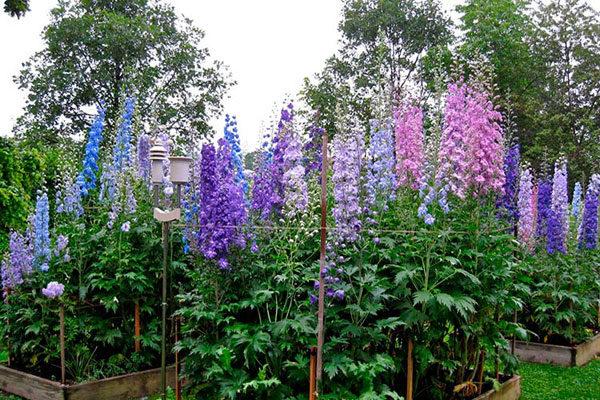
Major
A variety bred on the basis of a gargan bell. It has sapphire flowers.
H. Paine
A variety developed on the basis of the gargan bell. It has lavender-colored flowers with a white eye.
Loder
The cultivar originated from the spiral-leaved bell. This variety has double flowers of a pale blue color.
Miss Wilmott
Derived on the basis of the spiral-leaved variety of bells. The flowers are blue.
Beauty Trust
Bred from the base of the Takeshima bell. It has large snow-white spider-shaped flowers.
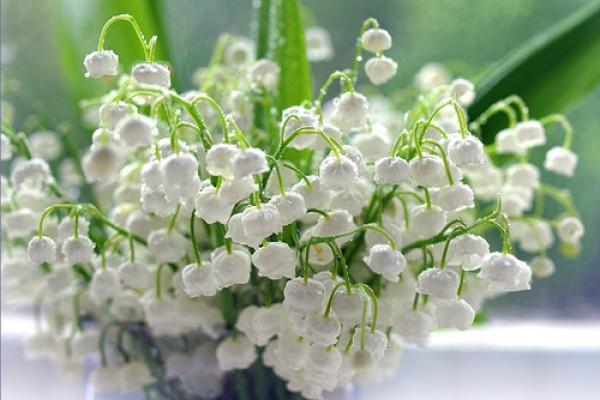
Wedding Belz
The variety is derived from the Takeshima bell. The flowers are bell-shaped, they are snow-white and double.
Rubra
A dotted variety of a bell with bright lilac flowers covered with small dots.
Albic Nana
A variety derived from a dotted bell. It has white flowers with numerous dots on the petals.
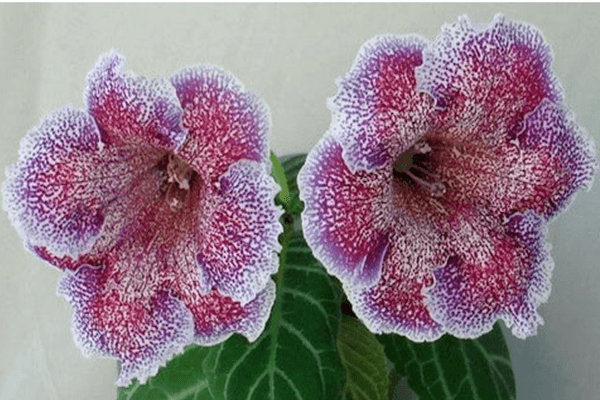
Pink Octupus
Hybrid, 60 centimeters high. The flowers are pinkish, with narrow, linear petals similar to a pink octopus.
Kent Belle
Hybrid, up to 75 centimeters high. Forms thin peduncles with wide, lilac flowers.
Brantwood
The variety is obtained on the basis of a broadleaf bellflower. It has a funnel-shaped purple flowers located at the top of an erect stem.
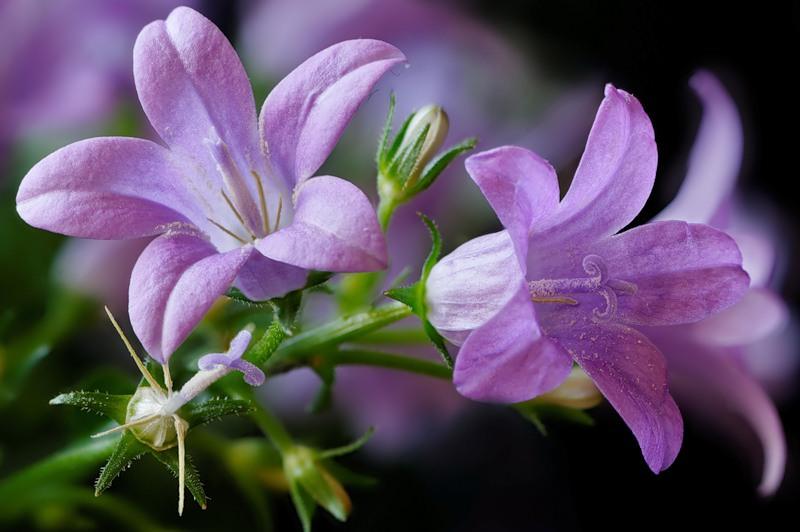
Makranta
A variety of broad-leaved bell with an erect, long stem. Flowers - violet shade, large.
Bernice
The variety is obtained from the peach-leaved bell. Blue double flowers are collected in several pieces in a racemose, loose inflorescence.
Thetam Beauty
The tall variety belongs to the peach-leaved variety. It has light blue large flowers, collected in loose inflorescences.
Exmaus
A tall plant derived from a peach-leaved bell. It has dull blue double flowers.
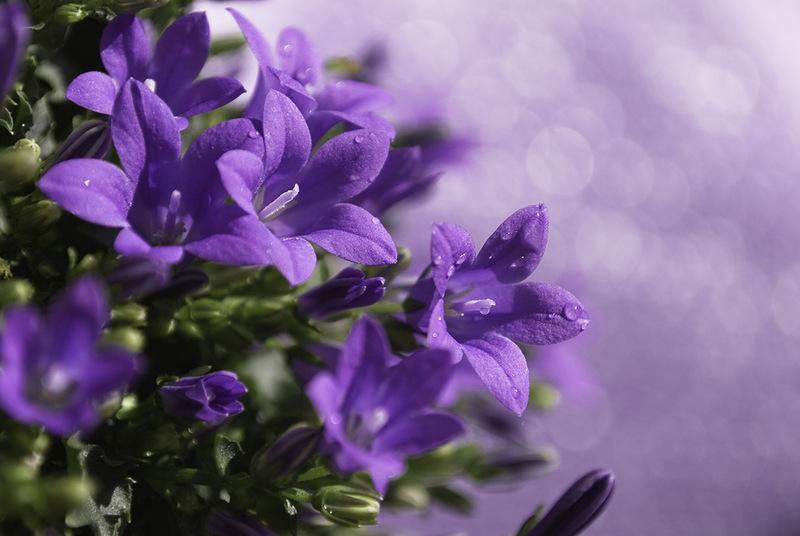
Snow drift
Refers to the peach-leaved variety. It looks like a large-flowered lily of the valley. Forms tall stems with paniculate inflorescences, consisting of snow-white bells.
New Giant Highbrides
Refers to the peach-leaved variety. The height of the erect stem is up to 75 centimeters. At the top, a paniculate inflorescence of large, snow-white or rich blue flowers is formed.
Cerulea
A variety of milk-flowered bell. A tall plant with a pyramidal inflorescence, consisting of a large number of bluish flowers.
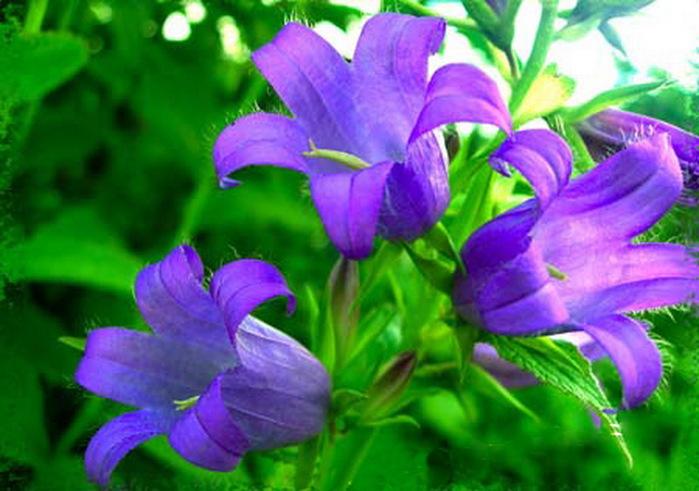
Pritchard Verayeti
Belongs to the milky variety. The stem can be up to 150 centimeters. At the top is an inflorescence of numerous lavender-colored flowers.
Celestine
The variety is bred on the basis of the Carpathian bell. This culture has sky-blue single flowers.
Isabel
A popular variety of the Carpathian bell with a heavenly shade of flowers.
Alba Nana
The variety is bred on the basis of a dotted bell. Flowers - snow-white, drooping, located on thin, long stems.

